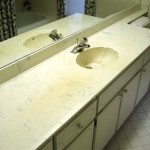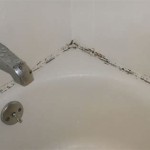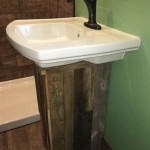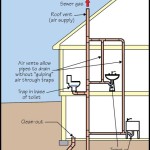How to Reface a Bathroom Sink
Revitalize your bathroom with a sink refacing project! By replacing the outdated or damaged surface of your sink, you can transform its aesthetics and functionality without the need for a costly replacement. Here's a comprehensive guide to help you reface your bathroom sink like a pro:
1. Gather Materials and Tools
Before you start, gather these essential materials:
- New sink surface material (e.g., laminate, quartz, acrylic)
- Adhesive (compatible with both the sink and surface material)
- Primer (if required by the adhesive)
- Caulk (for sealing edges)
- Sandpaper (120-grit and 220-grit)
- Measuring tape
- Utility knife
- Trowel or spreader
- Level
- Drill (optional, for mounting hardware)
2. Prepare the Sink Area
Clean the sink thoroughly with a degreaser to remove any dirt or residue. Dry the surface completely. Use sandpaper to lightly scuff the existing sink surface to enhance adhesion. Wipe away any dust.
3. Apply Primer (if necessary)
Some adhesives require a primer to improve bonding. If specified, apply a thin coat of primer to the sink surface and let it dry according to the manufacturer's instructions.
4. Cut and Apply the Surface Material
Measure and cut the new surface material to fit the size of your sink. Apply a generous layer of adhesive to the back of the surface material and align it precisely on top of the existing sink surface. Press firmly and use a level to ensure it's even.
5. Secure the Surface Material
Depending on the type of adhesive used, you may need to weigh down the surface material with heavy objects or clamp it in place until the adhesive cures completely. Refer to the manufacturer's instructions for specific curing times.
6. Finish the Edges
Once the adhesive is dry, finish the edges of the new surface material by applying a thin bead of caulk. Smooth out the caulk with your finger or a caulk tool. Allow the caulk to dry overnight.
7. Install Hardware (optional)
If the new surface material requires any hardware, such as a faucet or soap dispenser, mark the appropriate locations and drill pilot holes. Install the hardware according to the manufacturer's instructions and tighten securely.
Tips for Success:
- Choose a surface material that complements your bathroom décor and is durable enough for daily use.
- Use a high-quality adhesive and follow the manufacturer's instructions carefully for optimal bonding.
- Take your time and be precise when cutting and applying the surface material to avoid any misalignments or gaps.
- If you encounter any difficulties, don't hesitate to consult a professional for assistance.
- Enjoy your newly refreshed bathroom sink, which will enhance both its aesthetics and functionality for years to come.

How To Refinish Bathroom Vanity Top With Diy Resin Thediyplan

How To Refinish A Bathroom Vanity Bower Power

How To Refinish A Bathroom Vanity Bower Power

How To Refinish Bathroom Cabinets Diy Domestic

Paint Bathroom Vanity Countertop Sink So Easy A Piece Of Rainbow

How To Refinish Bathroom Countertops Domestic

Fluted Bathroom Cabinet Refacing Diy At Home With Ashley

How To Reface A Bathroom Vanity Cabinet Dowelmax

Fluted Bathroom Cabinet Refacing Diy Cabinets Doors Vanity

How To Refinish Bathroom Vanity Top With Diy Resin Thediyplan
Related Posts







